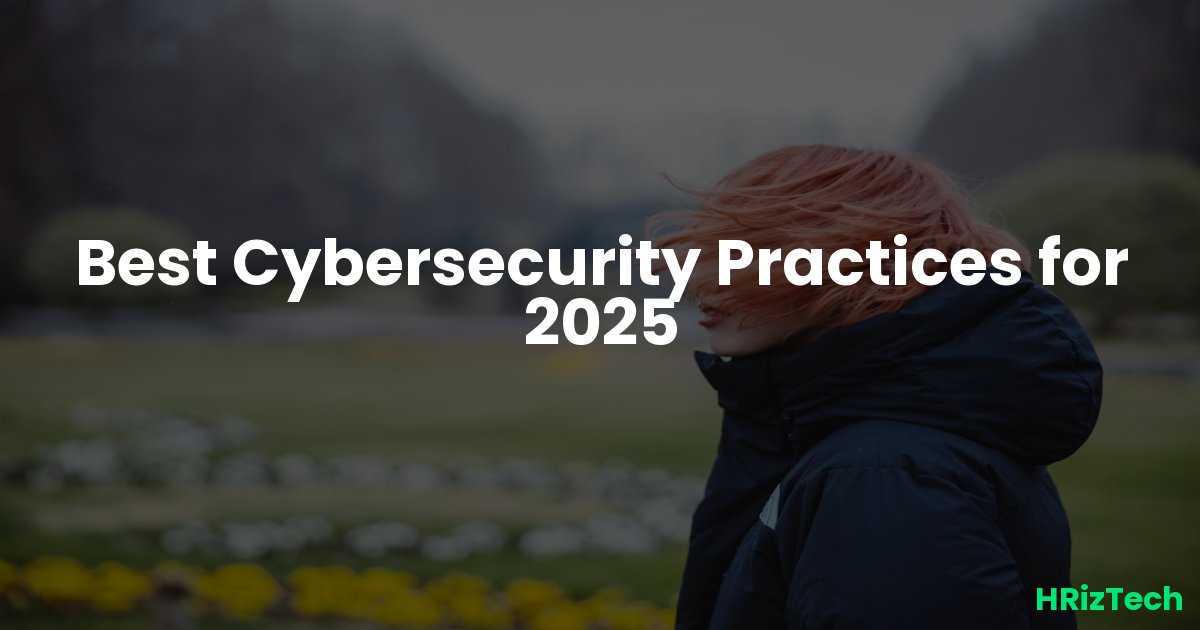Best Cybersecurity Practices for 2025

Best Cybersecurity Practices for 2025
Ever felt that sinking feeling in your stomach when you hear about another massive data breach? You're not alone. Cybersecurity threats are constantly evolving, and staying ahead of the curve is crucial, especially as we head into 2025. That’s why understanding the best cybersecurity practices for 2025 is more important than ever. This post will equip you with the knowledge and tools to protect yourself and your business.Understanding the Evolving Threat Landscape
The digital world in 2025 will be vastly different than today's. We'll see even more interconnected devices, a surge in AI-powered attacks, and increasingly sophisticated phishing scams. A 2025 Gartner report (hypothetical) predicts a 30% increase in AI-driven cyberattacks targeting businesses. This means traditional security measures simply won't cut it.
The Rise of AI in Cybersecurity (and Against It)
Artificial intelligence is a double-edged sword. While it offers powerful tools for threat detection and response, it also empowers malicious actors to create more sophisticated and harder-to-detect attacks. How do we stay ahead? By embracing AI-powered security solutions ourselves.
Best Cybersecurity Practices for 2025: A Multi-Layered Approach
Effective cybersecurity isn't a single solution; it's a layered strategy. Think of it like a castle with multiple defenses. No single wall can withstand everything, but multiple layers increase security significantly.
1. Strong Passwords and Multi-Factor Authentication (MFA)
This remains fundamental. Use unique, complex passwords for every account and enable MFA whenever possible. MFA adds an extra layer of security, making it much harder for hackers to access your accounts even if they obtain your password.
2. Regular Software Updates and Patching
Keeping your software up-to-date is crucial. Updates often include security patches that fix vulnerabilities hackers exploit. Automate updates whenever possible to ensure you're always protected.
3. Employee Security Awareness Training
Your employees are your first line of defense. Regular security awareness training is essential to educate them about phishing scams, social engineering tactics, and safe browsing habits. Investing in this training is an investment in your overall security.
4. Robust Endpoint Protection
Endpoints – your computers, laptops, smartphones, and other devices – are vulnerable entry points. Invest in robust endpoint detection and response (EDR) solutions that offer real-time protection and threat detection. Consider solutions that incorporate AI for advanced threat hunting.
Embracing AI for Enhanced Security
As mentioned earlier, AI is key to navigating the cybersecurity landscape of 2025. But how do you start building an AI chatbot for security purposes? It's more complex than just installing a software program. You'll need to work with specialized AI/ML engineers and incorporate it into your existing security infrastructure.
Utilizing AI-Powered Security Tools
- Threat Intelligence Platforms: These platforms use AI to analyze threat data and identify potential attacks before they happen.
- Security Information and Event Management (SIEM) Systems: AI-powered SIEMs can automate threat detection and response, significantly improving efficiency.
- AI-Driven Vulnerability Management: AI can help prioritize vulnerabilities based on risk, allowing you to focus your efforts on the most critical issues.
Data Backup and Disaster Recovery Planning
Even with the best security measures, data breaches can still happen. Having a robust data backup and disaster recovery plan is crucial. Regularly back up your data to a secure, offsite location and test your recovery plan regularly to ensure it works.
Best Cybersecurity Practices for 2025: Staying Ahead of the Curve
The best cybersecurity practices for 2025 require a proactive and adaptable approach. It's not a one-time fix but an ongoing process of improvement and adaptation. By implementing these strategies, you'll be significantly better prepared to face the evolving threats of the future.
Remember, cybersecurity is a shared responsibility. It's not just about technology; it's about people and processes. By educating your employees, investing in robust security solutions, and staying informed about emerging threats, you can significantly reduce your risk.
What are your biggest cybersecurity concerns heading into 2025? Share your thoughts in the comments below!
What’s your favorite AI tool for improving cybersecurity? Share below!
Comments
No comments yet. Be the first to comment!